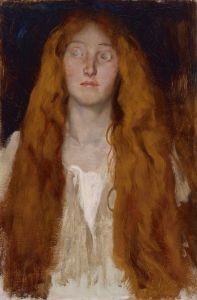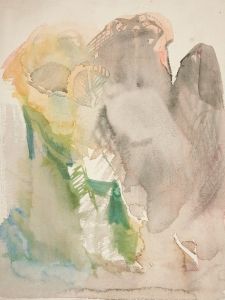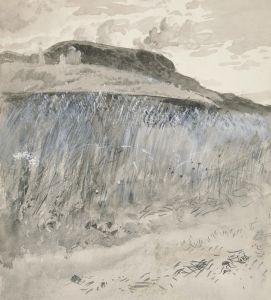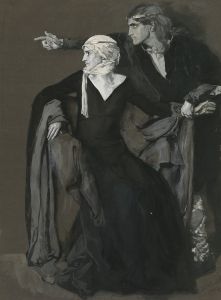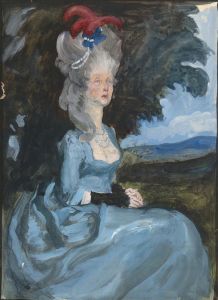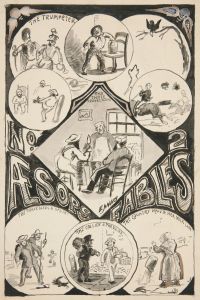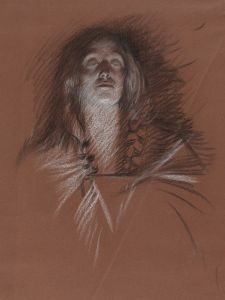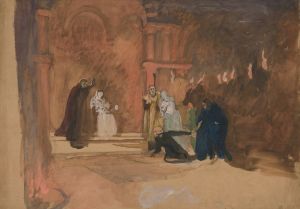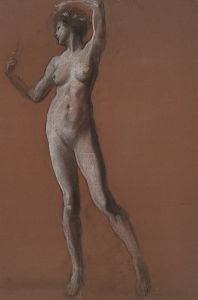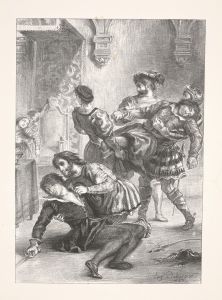
Unidentified scene, from Hamlet or Macbeth
A hand-painted replica of Edwin Austin Abbey’s masterpiece Unidentified scene, from Hamlet or Macbeth, meticulously crafted by professional artists to capture the true essence of the original. Each piece is created with museum-quality canvas and rare mineral pigments, carefully painted by experienced artists with delicate brushstrokes and rich, layered colors to perfectly recreate the texture of the original artwork. Unlike machine-printed reproductions, this hand-painted version brings the painting to life, infused with the artist’s emotions and skill in every stroke. Whether for personal collection or home decoration, it instantly elevates the artistic atmosphere of any space.
Edwin Austin Abbey's painting "Unidentified Scene, from Hamlet or Macbeth" is an intriguing work that captures the imagination of art enthusiasts and scholars alike. Abbey, an American artist known for his illustrations and paintings, particularly those depicting scenes from Shakespearean plays, created this piece in the late 19th or early 20th century. The painting is notable for its ambiguous subject matter, as it is not definitively linked to a specific scene from either "Hamlet" or "Macbeth," two of William Shakespeare's most famous tragedies.
Abbey was born in 1852 in Philadelphia, Pennsylvania, and began his career as an illustrator for magazines such as Harper's Weekly. His interest in Shakespearean themes is evident throughout his body of work, and he spent a significant portion of his career in England, where he became associated with the Pre-Raphaelite Brotherhood and other artists who were inspired by literature and history. Abbey's fascination with Shakespeare led him to create a series of paintings and illustrations based on the Bard's plays, capturing the drama and emotion of these timeless stories.
The painting in question, "Unidentified Scene, from Hamlet or Macbeth," is characterized by its dramatic use of light and shadow, a hallmark of Abbey's style. The composition likely includes figures in period costumes, set against a backdrop that evokes the Elizabethan era. Abbey's attention to detail and his ability to convey the psychological depth of his characters are evident in the expressions and postures of the figures depicted in the painting.
While the exact scene from "Hamlet" or "Macbeth" that Abbey intended to portray remains unidentified, both plays offer a wealth of dramatic moments that could have inspired the artist. "Hamlet," a tragedy centered around the Prince of Denmark's quest for revenge against his uncle, is filled with themes of madness, betrayal, and existential contemplation. "Macbeth," on the other hand, explores ambition, guilt, and the supernatural, following the rise and fall of the Scottish nobleman Macbeth.
Abbey's work often reflects his deep understanding of the source material, and his ability to capture the essence of Shakespeare's characters and themes is evident in this painting. The ambiguity of the scene allows viewers to engage with the work on a personal level, drawing their interpretations and connections to the plays.
The painting is part of Abbey's larger oeuvre, which includes murals, illustrations, and other paintings. His contributions to the art world were recognized during his lifetime, and he was elected to the Royal Academy of Arts in London in 1898. Abbey's legacy continues to be celebrated for his ability to bring literary works to life through his art.
In summary, "Unidentified Scene, from Hamlet or Macbeth" by Edwin Austin Abbey is a testament to the artist's skill in capturing the essence of Shakespearean drama. Although the specific scene remains unidentified, the painting invites viewers to explore the rich emotional and thematic landscape of "Hamlet" and "Macbeth," showcasing Abbey's enduring fascination with the works of William Shakespeare.





